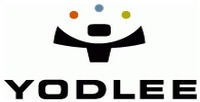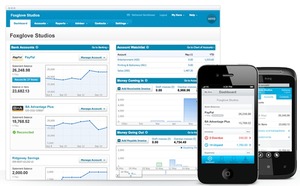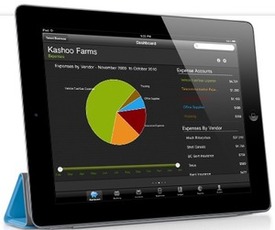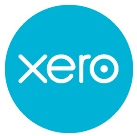 More than 60 leading fintech innovators, both startups and established companies, are gearing up to present at the biggest Finovate ever, Sep. 20/21 in NYC.
More than 60 leading fintech innovators, both startups and established companies, are gearing up to present at the biggest Finovate ever, Sep. 20/21 in NYC.
Each company provided a sneak peek of what they’ll be demoing on stage next month. Below is the first installment of these teasers. We’ll have more next week.
_____________________________

Backbase is launching “Retail Bank of the Future,” representing the e-banking engagement experience of tomorrow. It embodies the newest User Experience (UX) patterns based on input gathered from customer research, industry thought leaders and UX specialists.
Innovation type: Mobile UI, online UI

Personal finance is a chore and not too high on any To-Do list. Life is busy and finance stresses people out.
At Balance, we manage your personal financial chores for you. We combine professional service (your own bookkeeper!) with all of your financial accounts and bills in one place for a fully managed experience that is personalized for you.
At Finovate we will show how you can now connect your financial accounts to Balance and power our newest expense tracking, budgeting and custom reporting tools. Also, look for a demo of our photo bill pay app and some other surprises!
Innovation type: Banking, payments, PFM

Saving for a house? And retirement? And that dream vacation? No problem with Betterment.com! We’ve created the simplest, fastest, and most efficient way for consumers to invest for their goals and the future.
Innovation type: Banking, investing, PFM

Banks need to re-define the relationship they have with consumers if they want to succeed in today’s market. StatementRewards has introduced an effective way for financial institutions to inexpensively reward their consumers for banking with them, which in turn increases loyalty and customer satisfaction.
At Finovate, BillShrink announces a new innovation that harnesses the intelligence of aggregated transactional data and applies it to customers’ social networking and purchase management activities. By utilizing advanced analytics to present the most personalized offers and other services to customers, StatementRewards gives financial institutions a unique, competitive edge.
Innovation type: Cards, PFM, rewards

Want to see the definitive search engine for tackling today’s banking issues? cbanc Network has created a revolutionary online collaborative platform for financial institutions to share best practices. This secure online community contains the largest repository of peer-authored, board-approved, exam-tested content anywhere. Here, banking professionals trade real, practical work — including policies, procedures, agreements, vendor reviews and more from every department of a bank or credit union.
This network
- Motivates people to share their best work
- Uses points as currency to incentivize users
- Helps FIs prepare for exams
- Protects users around legal and competitive concerns of sharing
Innovation type: Back office, online UI, security

The technology of the CLX.SentinelDisplay, a Class 4 reader with a hardened browser, hardened middleware, an integrated smart card and a high-resolution display, ensures extremely high, comprehensive security in e-banking applications.
Along with the reader’s extremely secure customer authentication and transaction signing mechanisms, the advanced concepts for application authentication and pro-active security updates is unique. The hardened browser (CLX.SecureBrowser) onboard the reader ensures full confidentiality of customer data – a security aspect that is often entirely ignored.
Innovation type: Identity, payments, security

DeMystData’s new web-based modeling platform helps lenders grow thin file portfolios without increasing their risk level. With minimal inputs, our tool leverages the vast amounts of data accumulated online, applies advanced statistical techniques, and configures a bespoke predictive API that captures additional customer information without adding underwriting complexity.
The DeMystData platform has application in variety of commercial environments incl
uding credit issuance, risk assessment, segment identification, and offer customization.
Innovation type: Identity, lending, marketing

Credit unions, banks, financial advisors, financial institutions: How are you delivering youth financial education to your client families? How are you connecting with your next generation client? How are you fulfilling Community Reinvestment Act (CRA) responsibilities for financial literacy programs that progress in complexity as students get older?
You’ve tried online content and even interactive online games, but the results are disappointing. Neither can hold a child’s attention for long or keep them coming back over the years. We have a better way. It’s no game. It’s real experience. It works. We can’t wait to show you at FinovateFall 2011.
Innovation type: Online UI, PFM

Fuze Network provides innovative ways for financial companies and their customers to work together. Learn how we help billers to build brand loyalty, aid in collection efforts, reduce fees, boost your customer service efforts and help to eliminate misdirected funds.
With Fuze at your back we can help to boost your store traffic, drive sales, increase revenues and simplify the hassle of payment processing all while creating a better customer service experience.
Fuze helps connect customers with the closest payment locations, online bill payments, simple cash payment solutions, and easy utility bill payment all while saving them fees and the hassle and stress of paying bills.
Innovation type: Back office, cards, payments

Ready to have your financial mind blown away? Lighter Capital is combining light-hearted irreverence PLUS a light-weight and flexible funding structure PLUS a social-based investment decision analysis to make it easier, faster and more fun for small businesses to access capital than ever before! Get ready!
Innovation type: Investing, lending, small business
-thumb-200x31-3737.jpg)
KulaX is a cross-sell engine that enables financial institutions to leverage their online banking platform to generate more leads faster without interfering with core banking functions.
Online banking customers are targeted with the “next best product” where they are invited, at logout, to engage in an automated one-on-one microinterview with their financial institution about their financial products needs and preferences. Upon interview completion, customers are presented with special offers for the FI’s products and services that have been tailored based on interview responses; requested offers are emailed to customers.
Innovation type: Marketing, rewards

Modo converts redemptions to payments, and makes payments mobile. Our demo will show how easy it is to onboard consumers and merchants, as well as the simplicity of paying with modo.
And of course, most importantly, why you should GET modo and PAY with modo, in the first place: MORE!
Innovation type: Mobile, payments, rewards

When your brand is in the palm of your customer’s hand: make the most of mobile technology. Mootwin helps your business enhance the mobile customer experience, re-enforce loyalty, and accelerate revenue growth.
Innovation type: Communications, marketing, mobile

MShift and ACI Worldwide formed an alliance in 2010 to offer mobile delivery of ACI Enterprise Banker, the industry leading business banking solution.
They are now partnering to create a ground-breaking mobile business banking native application for the tablet. The application is focused on robust and graphically rich presentations of financial data as well operational tasks like ACH, wire release and bill payment, all with access from anywhere at anytime.
Innovation type: Banking, mobile, payments

MyCyberTwin will demo its Artificial Intelligence solutions, called virtual agents
, and give a detailed explanation about how current leading financial institutions are using the technology today and will use the technology in the future.
It is a powerful demo to show an audience how a computer thinks and answers questions in real-time, helping customers get the answers they need while helping companies garner the intelligence of the customers visiting their websites. This demo will also showcase an emotionally responsive AI virtual agent able to capture emotion including smiling, frowning, and expressing gratitude.
Innovation type: Communications, marketing, sales

The oFlows paperless loan and deposit originations system has expanded beyond financial institutions. Because oFlows has seamlessly integrated credit, fraud and payment systems, now anyone can use oFlows for just about any transaction.
Think of the last time you were handed a clipboard with a paper form on it. Next time it might be a tablet computer running oFlows.
Innovation type: Banking, lending, mobile
 (1)-thumb-200x75-3709.png)
Consumers have plans, life plans, and want to understand how those plans affect their finances in the future, so they can make better decisions.
Planwise is launching tools that will help any consumer, from the teen buying a laptop, the 20-something buying a car, the couple buying their first home to the astute property investor, to better understand how their decisions today might look in the future financially.
The consumer can then connect with the lender or adviser of choice to quote, get advice or apply.
Innovation type: Lending, marketing, PFM

Putting money aside for a rainy day is easier said than done. Many Americans do not have any money saved for emergencies.
Plastyc aims to change this by introducing automated savings built into prepaid card accounts. Setting aside a few dollars every day, week or month will be just a single click away. Money accumulated in the savings purse of the card account will reward savers with cash at unprecedented rates.
Innovation type: Banking, cards, online UI

ReadyForZero is an online program for the 77% of American families who are paying down debt. For individuals and families, ReadyForZero facilitates the management and reduction of debt.
For financial institutions, the program is a low-touch and consumer-friendly alternative that reduces net credit loss and improves customer retention.
Innovation type: Online UI, payments, PFM

Rebirth Financial, noted by the Federal Reserve Bank of San Francisco as a company to “change the US finance system,” is shaking up the small business lending game again!
In February, Rebirth launched the nation’s first peer-to-business lending platform. Shortly after, Rebirth uniquely integrated SBA and CRA lending into the P2B mix.
Now, Rebirth is introducing the JAS Rating System! It’s a system that will redefine the way we analyze small business and a must-see for financial institutions lending to small businesses and companies wondering whether they should extend credit to a new client. It’s just another game changer from Rebirth Financial.
Innovation type: Back office, lending, small business

T8 Webware is bringing native mobile services to the masses by giving consumers real-time access to their financial purchase capabilities. Grip, a financial decision-making tool supports consumers’ daily needs, empowering them to understand their money flow simply and without clutter.
Grip enables financial institutions to provide convenient information on the go; addressing consumers’ mobile needs through a highly secured mobile and tablet app. With no reliance on core integration, financial institutions can offer Grip almost immediately and without any upfront fees. It can be deployed in three weeks and costs 99 cents each month for customers who use the app.
Innovation type: Communications, mobile, PFM

The Transecq solution, powered by ENTERSECT ITA, has revolutionized two-factor authentications by utilizing the power of the end user’s mobile device, fully encrypting the device and creating a multi-factor authentication tool.
Strong 2-Factor authentication delivered ubiquitously across the globe puts the power of approval in the appropriate hands.Thus providing protection and security way beyond passwords and account challenges.
Transecq is the industry leading innovator and developer of mobile security sol
utions for the financial services market. All the services leverage the security of Digital Fingerprint technology which uniquely ties a user and his/her mobile phone to an encryption key.
Innovation type: Communications, identity, security

Weemba revolutionizes the way borrowers and lenders find each other and interact in a social-network-like online format. Borrowers create a profile and post a loan project under a nickname.
Profiles may include everything from the Borrower’s income and education level (individuals) to their number of employees and annual sales (businesses). Lenders search projects by credit score, amount needed, purpose and more.
When a Lender finds an interesting project, the Lender then may ask the Borrower for access to their real identity. If the Borrower grants access to the Lender, all further contact and any negotiations take place outside Weemba.
Innovation type: Lending, marketing

At FinovateFall 2011, Yodlee will demonstrate customization without effort. The company has developed a way for banks to automatically tailor a consumer’s initial experience with personal financial management.
Or, as the company likes to say:
Online banking can be such a chore
Checking balances is often a bore
With new customization
You’ll cause a sensation
Yodlee FinApps offers MUCH more
All new at Finovate
Banking that will motivate
Inspire and personalize
You’ll see how to stylize
Your customers will tell you you’re so GREAT





















 (1)-thumb-200x75-3709.png)


















